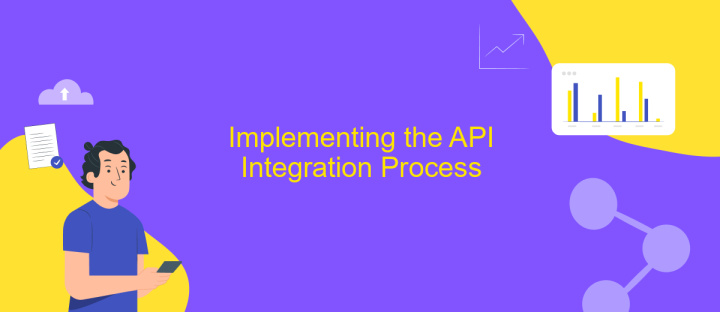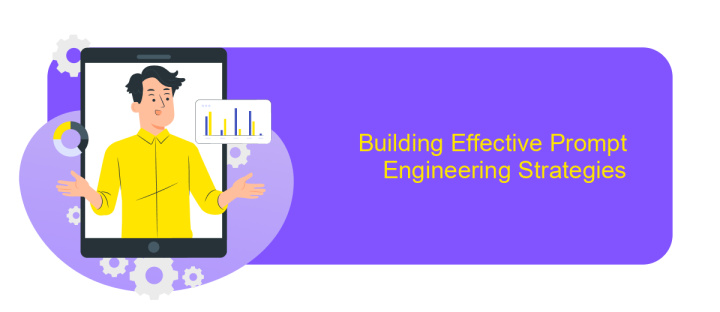LLM API Integration
Integrating a Large Language Model (LLM) API into your applications can significantly enhance their capabilities, enabling advanced natural language processing, improved user interactions, and automated content generation. This article explores the key steps and considerations for successful LLM API integration, helping developers harness the power of AI to create more intelligent and responsive software solutions. Discover how to seamlessly incorporate LLM technology into your projects today.
Understanding LLM APIs and Their Capabilities
Large Language Model (LLM) APIs have revolutionized the way developers integrate advanced language processing into applications. These APIs provide access to powerful language models capable of understanding and generating human-like text. By leveraging LLM APIs, developers can enhance applications with features such as natural language understanding, text generation, and sentiment analysis, enabling more intuitive user interactions.
- Text Generation: Create coherent and contextually relevant text for various applications.
- Language Translation: Convert text between languages while maintaining meaning and nuance.
- Sentiment Analysis: Assess the emotional tone of text to gauge user sentiment.
- Text Summarization: Condense lengthy documents into concise summaries without losing key information.
- Question Answering: Provide accurate responses to user queries based on extensive data sources.
Understanding the capabilities of LLM APIs allows developers to tailor applications to better meet user needs. By integrating these powerful tools, applications can offer enhanced user experiences, streamline operations, and unlock new possibilities for innovation. As LLM technology continues to evolve, its potential applications across industries are bound to expand, making it an invaluable asset for developers worldwide.
Choosing the Right LLM API for Your Needs

When selecting the right LLM API for your needs, it's crucial to consider factors such as functionality, scalability, and ease of integration. Begin by evaluating the specific features offered by different APIs, ensuring they align with your project requirements. Consider the scalability options, as your needs may grow over time. It's also important to assess the API's performance and reliability, especially if your application demands high availability and quick response times.
Integration capabilities are another key consideration. Opt for APIs that offer seamless integration and compatibility with your existing systems. Tools like ApiX-Drive can simplify this process by automating data transfer and synchronizing applications, saving time and reducing errors. Additionally, review the documentation and support provided by the API provider, as robust support can be invaluable during implementation and troubleshooting. Ultimately, choosing the right LLM API involves balancing technical capabilities with practical integration solutions to ensure a successful and efficient deployment.
Implementing the API Integration Process

Integrating an LLM API into your application can significantly enhance its capabilities by leveraging advanced language models. The process involves several key steps to ensure a seamless and effective integration. First, it's essential to thoroughly understand the API documentation provided by the LLM service provider. This will help in identifying the necessary endpoints, authentication methods, and data formats required for successful communication.
- Register and obtain API credentials from the LLM service provider.
- Set up a secure environment to store and manage API keys.
- Develop the backend logic to handle API requests and responses.
- Implement error handling to manage potential API call failures gracefully.
- Test the integration in a controlled environment before deploying it to production.
After executing these steps, it's crucial to monitor the API's performance and make adjustments as necessary. Regular updates and maintenance are important to align with any changes or improvements in the LLM API. By following this structured approach, developers can ensure a robust integration that enhances their application's functionality and user experience.
Building Effective Prompt Engineering Strategies

Crafting effective prompt engineering strategies is crucial for leveraging the full potential of LLM APIs. A well-designed prompt can significantly enhance the quality of the output, ensuring that the responses are relevant and aligned with the intended use case. The process involves understanding the nuances of language models and tailoring prompts to guide the model's behavior effectively.
To develop robust prompt engineering strategies, it is essential to experiment with different prompt structures and evaluate their impact on the model's responses. This iterative process helps in identifying the most effective prompts that yield accurate and contextually appropriate outputs. Additionally, incorporating feedback mechanisms allows for continuous refinement and optimization of prompts.
- Start with clear and concise prompts to minimize ambiguity.
- Incorporate context to guide the model's understanding.
- Use examples to illustrate the desired format or style.
- Iterate and refine prompts based on model performance and feedback.
Ultimately, effective prompt engineering is a dynamic process that requires ongoing experimentation and adaptation. By systematically refining prompts, developers can enhance the performance of LLM APIs, ensuring they deliver high-quality, relevant outputs that meet specific application needs.


Managing and Optimizing LLM API Performance
Effective management and optimization of LLM API performance are crucial for ensuring seamless integration and optimal functionality. One of the primary steps involves monitoring API usage and response times to identify bottlenecks or performance issues. Implementing caching mechanisms can significantly reduce redundant requests, thereby improving response times and reducing server load. Additionally, setting appropriate rate limits ensures that the API remains responsive under heavy usage.
Optimizing LLM API performance also involves configuring integrations to streamline data flow. Tools like ApiX-Drive facilitate this by offering automated workflows that efficiently connect different applications, reducing manual intervention and potential errors. Regularly updating API endpoints and libraries to the latest versions is essential to leverage new features and performance improvements. Finally, conducting load testing helps in understanding the system's capacity and preparing for peak usage scenarios, ensuring that the LLM API performs reliably under various conditions.
FAQ
What is LLM API Integration?
How do I integrate an LLM API into my application?
What are the common challenges faced during LLM API Integration?
How can I automate the integration process of LLM APIs?
What are the benefits of using an integration platform for LLM API Integration?
Routine tasks take a lot of time from employees? Do they burn out, do not have enough working day for the main duties and important things? Do you understand that the only way out of this situation in modern realities is automation? Try Apix-Drive for free and make sure that the online connector in 5 minutes of setting up integration will remove a significant part of the routine from your life and free up time for you and your employees.

